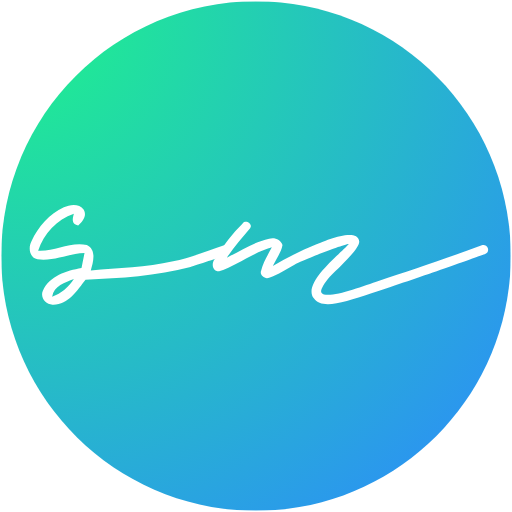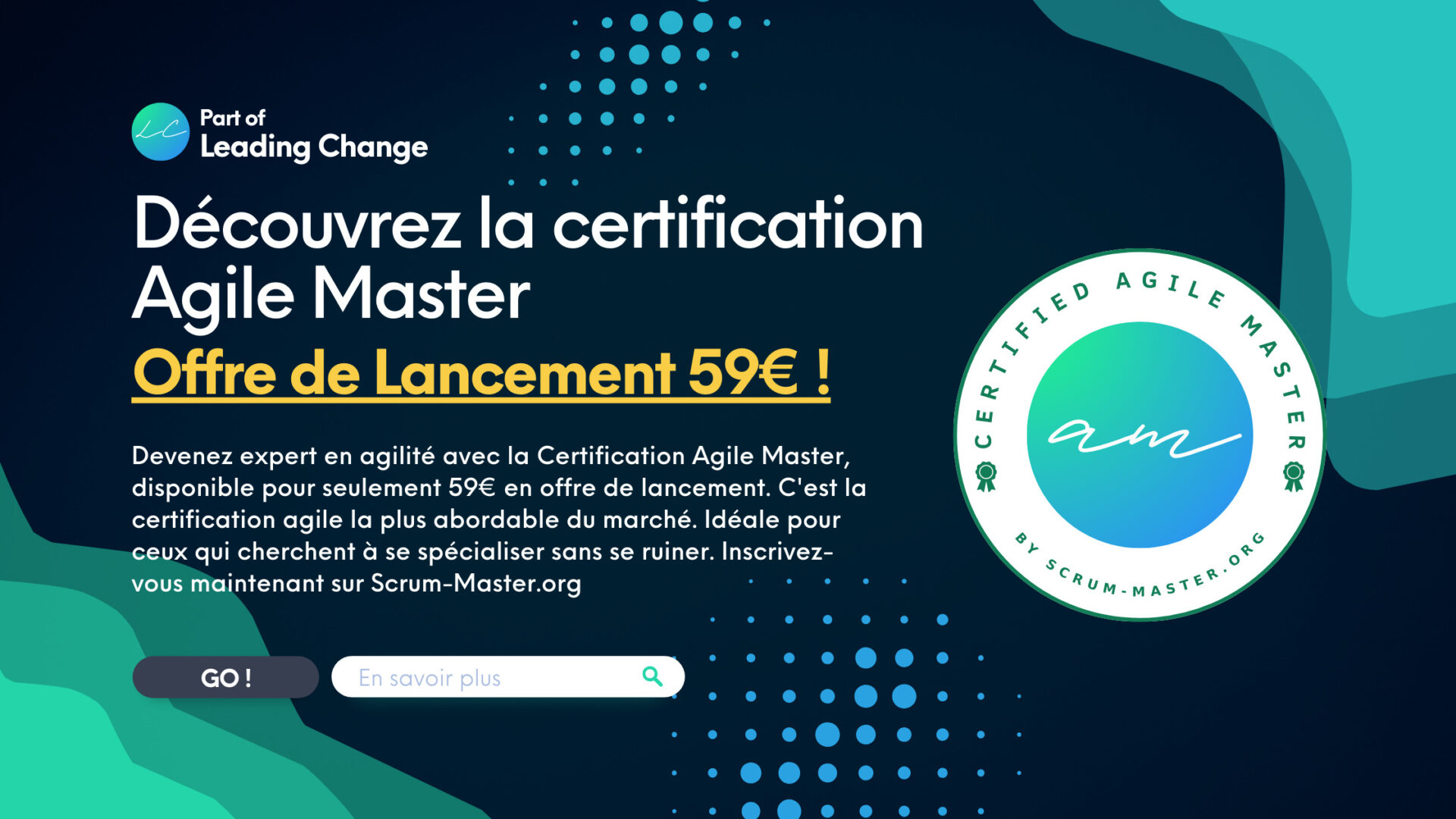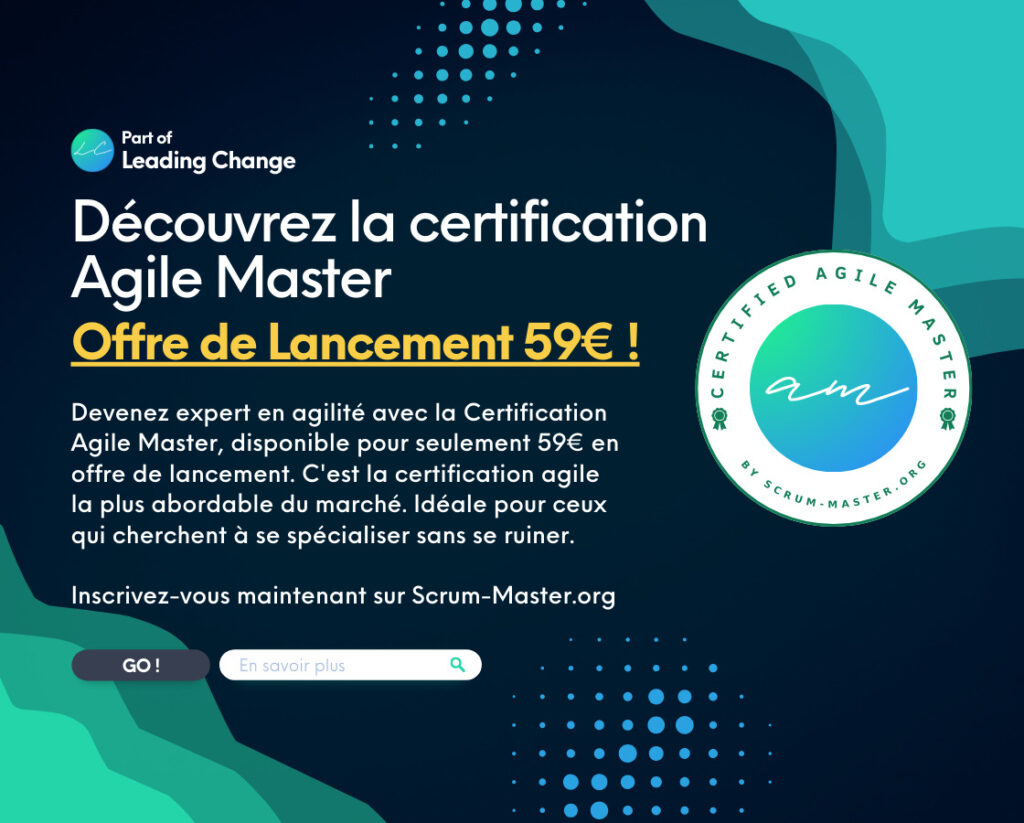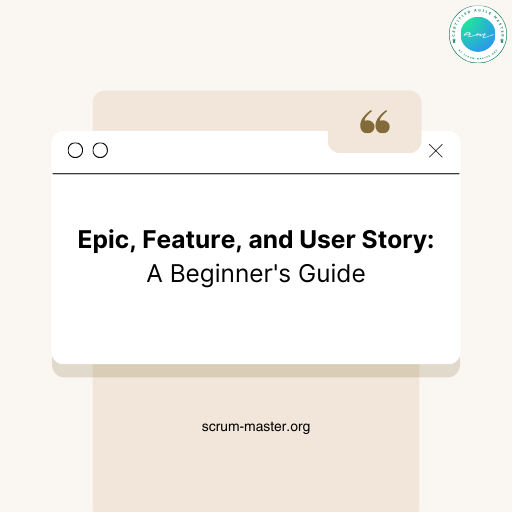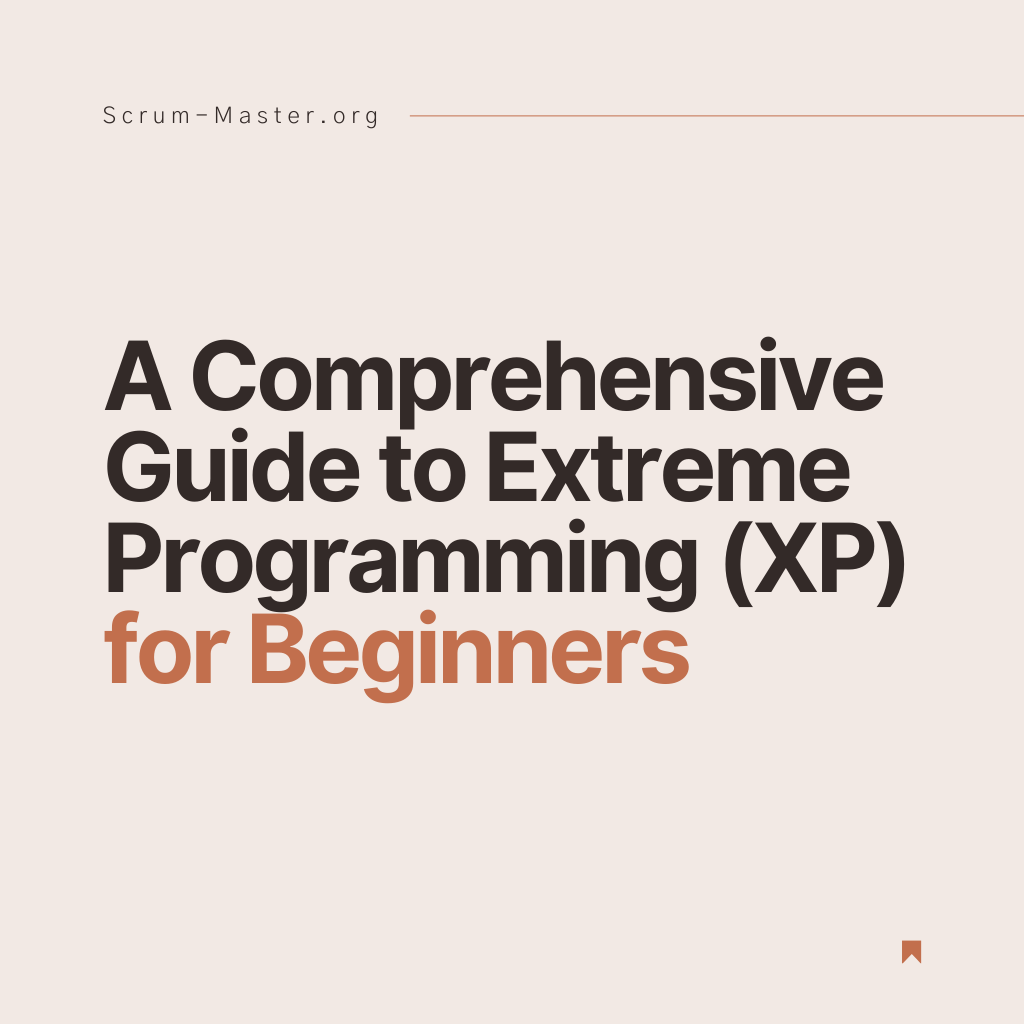In the world of agile development, Retrospectives plays a central role in the continuous improvement process. As a key element of Scrum, this meeting enables teams to reflect on the last sprint and identify areas for improvement. Among the various methods used, the Starfish retrospective format stands out for its ability to offer a complete, structured view of team performance.
Index
What is the Starfish Retrospective?
Starfish Retrospective is more than just a tool; it’s a strategic approach to evaluating teamwork. Any Scrum Master or agile facilitator looking to effectively lead a retrospective will find the Starfish model an ally in encouraging active participation and guaranteeing continuous improvement.
The columns of this retrospective:
Keep doing: Initiate the session by highlighting the practices and processes that contribute positively to the current sprint. This highlights successes and consolidates the solid foundations on which the team can build.
More of: Identify the actions that need to be increased in frequency or intensity that are already beneficial, to reinforce the team’s strengths.
Do less: Identify elements which, although useful, could be optimized to free up time and resources. This may include reducing certain activities or minimizing less essential processes.
Stop doing: Identify practices that don’t add value or that may be counter-productive. Eliminating these elements allows the team to refocus on what really matters for the next sprint.
Start doing: Conclude by identifying new practices or innovations to be introduced. This axis invites reflection on continuous improvement and on ways of injecting freshness and efficiency into future sprints.
The flexibility of the Starfish retrospective model
It’s crucial to understand that this order is not rigid. As a Scrum Master, you have the freedom to adjust this sequence according to the needs and unique dynamics of your team. Each retrospective is an opportunity for learning and adaptation, where the main objective is to support the team in its journey towards greater efficiency and satisfaction.
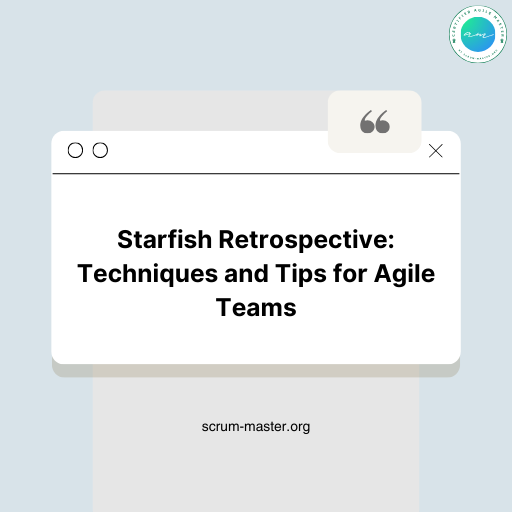
How to host a Starfish Retrospective?
Preparation
The Scrum Master plays a crucial role in facilitating this retrospective. The first step is to prepare a whiteboard divided into five zones (explained above), each representing one of the starfish retrospective axes. The aim is to create an environment where everyone can express themselves freely, to ensure that all points of view are heard.
Course
- Icebreaker: Start with a light activity to put team members at ease. In this article, I propose a few icebreakers compatible with the theme of this retrospective: Top 3: summer icebreakers to create with free Miro or Klaxoon templates.
- Model presentation: Explain the Starfish Retrospective concept and the purpose of each axis.
- Individual reflection: Give participants time to reflect individually and record their ideas on post-its.
- Sharing and Discussion: Each participant sticks his or her post-its in the corresponding area of the board and discusses his or her thoughts with the team.
- Prioritization and Action Plan: The team votes to identify the most critical actions to be taken and agrees on an action plan for the next sprint.
The benefits of the Starfish retrospective
The agile starfish retrospective is an essential tool for agile teams, encouraging continuous improvement by clearly identifying the adjustments needed. It guarantees the inclusion of every member, reinforcing team cohesion. With its five axes, it offers a comprehensive analysis of team performance, providing an overall understanding of strengths and areas for improvement. Its great adaptability makes it compatible with various agile approaches, whether Scrum, Kanban or Lean, making it a valuable tool for any agile team wishing to optimize its practices and collaboration.
Animate your Agile Retrospective with Starfish’s Free Online Templates
Discover the Starfish Template for Miro
Liven up your next agile retrospective with this free Starfish template, directly usable on Miro. Designed to simplify the facilitation of your online meetings, register and start using this retrospective template straight away!

Mobilize your Team with this downloadable Starfish Model
For all Scrum Masters, we also suggest our free template as a high-resolution image. Download and upload it easily to Miro, Klaxoon, iObeya and any other online visual management tool.
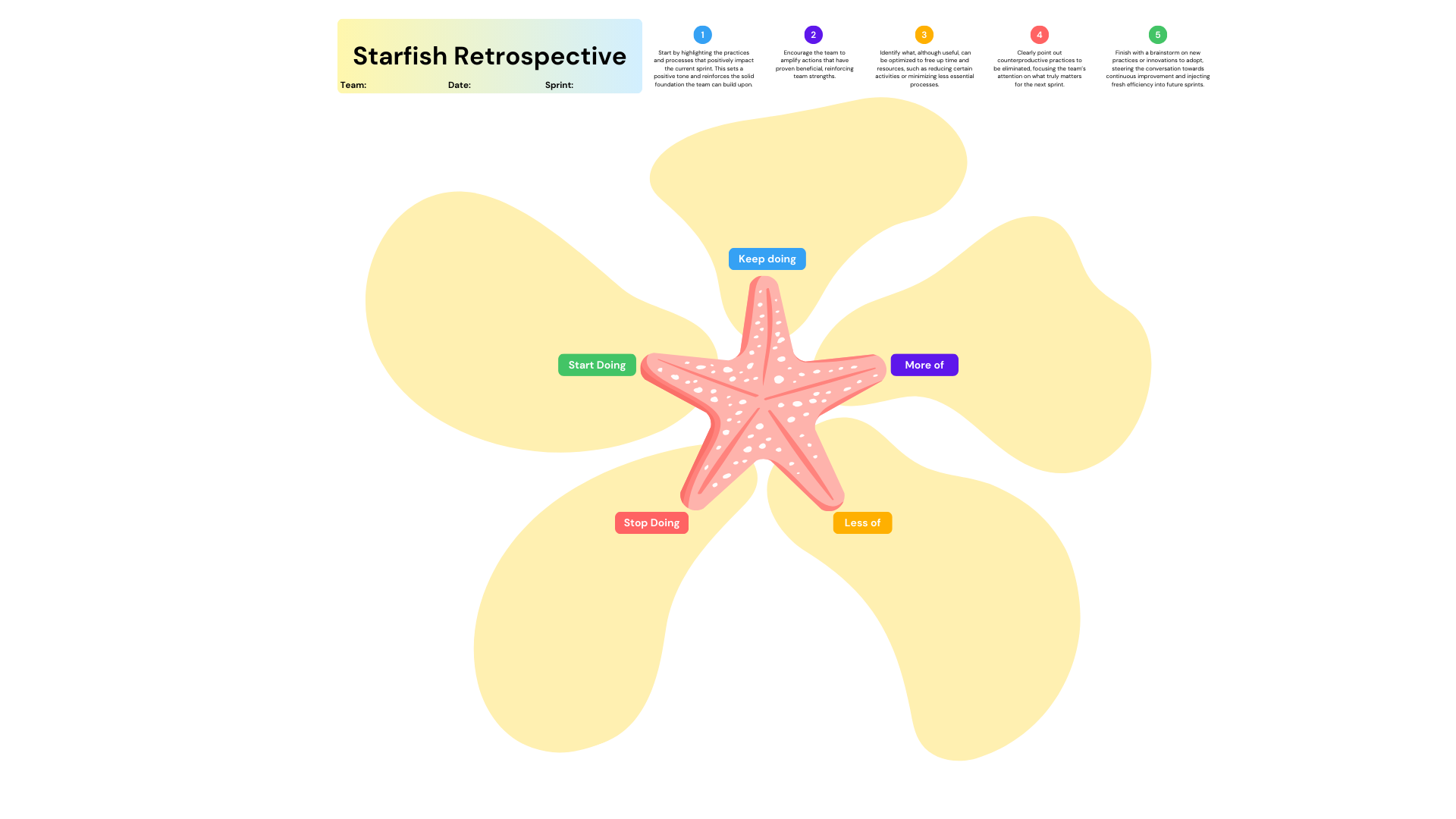
Conclusion
Starfish retro is a powerful tool for agile teams wishing to optimize the way they work. Its use fosters a culture of constructive feedback and continuous growth, essential for navigating today’s agile project environment. By adopting this method, teams can not only identify areas requiring adjustment but also celebrate successes, reinforcing their cohesion and efficiency.
